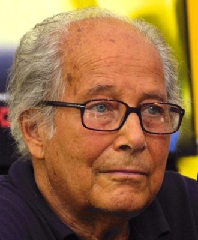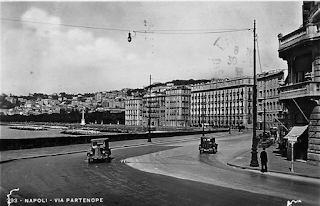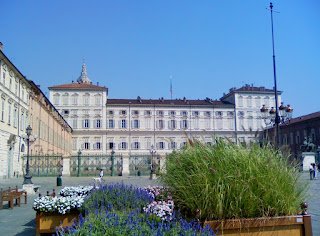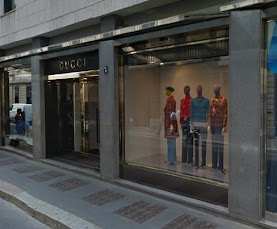Film star progressed from playing cowboys to become a popular parish priest
Terence Hill was born as Mario Girotti on this day in 1939 in Venice.
He became an actor as a child and went on to have many starring roles in films, particularly spaghetti westerns.
 |
| Terence Hill (left), born Mario Girotti, in his most famous role as the parish priest Don Matteo |
It was when he began acting in that genre that he changed his name to Terence Hill at the suggestion of one of his producers, who told him that Italian-made westerns were better received in English-speaking countries if the names in the credits sounded American.
He is said to have settled on Hill after the first name of his German-born mother, Hildegard, and Terence after the name of a Roman poet and playwright he admired.
Terence
Hill later became a household name in Italy as the actor who played the lead
character in the long-running television series, Don Matteo.
Hill lived in Germany as a child but then his family moved to Rome, the capital of Italy’s film industry. When he was 12 years old, Hill was spotted by director Dino Risi and given a part in Vacanze col gangster, an adventure movie in which five youngsters help a dangerous gangster escape from prison.
Other film parts
quickly followed and at the height of his popularity, Hill was said to be among
the highest-paid actors in Italy.
 |
| Hill had a leading role in Il Gattopardo (The Leopard) under his real name |
His most famous films are They Call Me Trinity and My Name is Nobody, in which he appeared with Henry Fonda. Another of his films, Django, Prepare a coffin was featured at the 64th Venice film festival in 2007.
Hill also had a major role in Luchino Visconti’s film, The Leopard along with Burt Lancaster, Claudia Cardinale and Alain Delon, in which he was listed in the cast under his real name.
Since 2000, on Italian television, Hill has portrayed Don Matteo, an inspirational parish priest who assists the Carabinieri to solve crimes that affect his community in Gubbio.
Hill received an international ‘Outstanding Actor of the Year’ award for this role at the 42nd Monte Carlo television festival.
The next
episode of Series 10 of Don Matteo will be shown on Thursday, 31 March at 21.20
Italian time on Rai Uno.
Gubbio in Umbria, where Don Matteo is filmed, is a small medieval town perched on the lower slopes of Mount Ingino in the Apennines. Via della Repubblica, the main street, leads to Piazza della Signoria where there is a magnificent 14th century palace, Palazzo dei Consoli, which houses the Tavole Eugubine, bronze tablets written in an ancient Umbrian language. From the square there are wonderful views over the town and surrounding countryside.
Travel tip:
Cinecittà in Rome, the hub of the Italian film industry, is a large studio complex to the south of the city, built during the fascist era under the personal direction of Benito Mussolini and his son, Vittorio. The studios were bombed by the Allies in the Second World War but were rebuilt and used again in the 1950s for large productions, such as Ben Hur. These days a range of productions, from television drama to music videos, are filmed there and it has its own dedicated Metro stop.
Home









